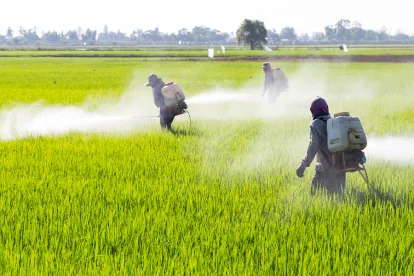On December 28, 2018, the California Department of Pesticide Regulation (DPR) issued Notice 2018-26 changing its Notice of Decision (NOD) and public report documentation for proposed registration decisions to ensure continued compliance with its certified regulatory program obligations under the California Environmental Quality Act (CEQA). The new changes to the NODs and public report documentation will be effective May 1, 2019.
These changes are as a result of a 2014 lawsuit brought by Pesticide Action Network North America (PANNA), et al. challenging DPR’s acceptance of label amendments for two previously registered dinotefuran pesticide products. The First District Court of Appeal held that DPR’s NODs and public reports supporting the dinoteferan registration actions were deficient because DPR could not demonstrate that it properly considered certain factors specified in CEQA. In essence, the court concluded that certain CEQA requirements that DPR construed as procedural in nature were actually substantive standards that DPR must meet and adequately document in its administrative record. Specifically, the court found that DPR failed to include a checklist or other documentation with meaningful analysis explaining how DPR reached its conclusion that the approval of the proposed label changes would not cause a significant adverse impact to human health, flora, fauna, water, and air.” The court also found DPR’s discussion of alternatives and cumulative impacts inadequate. Information about that case is available in our blog item California Court of Appeal Reverses Trial Court Decision Denying PANNA’s Petition Challenging Approval by DPR of Pesticides Containing Dinotefuran.
Background
CEQA is intended to ensure projects permitted by public agencies consider the long-term protection of the environment. DPR states that CEQA “requires state and local agencies to develop an environmental impact report (EIR) for any proposed or approved project that may have a significant effect on the environment (including human health) or a negative declaration if there is substantial evidence of no significant impacts.” EIRs provide public agencies and the public “with detailed information about a proposed project’s significant effects on the environment, describe ways these effects can be minimized, and indicate alternatives to the proposed project.” CEQA and its implementing regulations set forth in Title 3, California Code of Regulations (3 Cal. Code Regs.) Sections 6254 and 6255, also require DPR to issue a weekly Notice of Proposed Decisions to Register Pesticide Products and Public Report, listing each proposed decision to register and amend pesticide products for a 30-day public comment period.
Changes to the NOD and Public Report Documentation
To address concerns raised by the court and to protect its certified program status, on January 3, 2018, DPR issued California Notice 2018-01 (“Expanding Use of Pesticide Products Under Reevaluation”), providing that, effectively immediately, DPR “will not act upon an Application for Pesticide Registration or Application to Amend Pesticide Product if DPR determines the registration or acceptance would potentially ‘expand use’ … of an active ingredient or pesticide product currently under reevaluation until the conclusion of the reevaluation.”
With Notice 2018-26, DPR will change the documentation associated with its environmental analysis in the NODs and public reports. According to Notice 2018-26, the revised NODs and public reports will address the following areas for each pesticide product noticed for registration:
- Discussion of DPR’s certified program under CEQA;
- Relevant DPR regulations for the proposed decision and public report;
- Detailed description of the project;
- Overview of the registration program, scientific evaluation process, and continuous evaluation;
- Environmental and human health factors examined (i.e., checklist containing the following CEQA areas: human health, flora, fauna, water, and air);
- Discussion of feasible alternatives and mitigation;
- Discussion of existing environmental conditions and cumulative impacts; and
- Conclusion explaining DPR’s analysis of potential significant adverse impacts to human health, flora, fauna, water, and air.
In addition, each public report will include the proposed label. For label amendments, DPR will include both the proposed label and currently accepted label.
In summary, effective May 1, 2019, DPR “will no longer post new products and label amendments exiting the formal evaluation process as proposed to register for the 30-day public comment period until DPR completes a public report explaining why the new product or label amendment is not reasonably expected to cause a significant adverse impact to human health, flora, fauna, water, and air.” New products and label amendments that exit the formal evaluation process prior to May 1, 2019, will be posted for the 30-day public comment period using the current NOD documentation.
The impact of these changes could be substantial from a timing and DPR workload perspective and, thus, of significant concern to registrants. DPR has stated it is reviewing its internal processes and procedures and hiring additional staff to accommodate changes in workload as a result of the NOD and public report documentation changes. This is based, in part, on the fact that if current evaluation reports are not available for each CEQA checklist area (i.e., human health, flora, fauna, water, and air), DPR staff may need to review prior evaluation reports, documentation in product files, U.S. Environmental Protection Agency (EPA) risk assessments, and other available information to develop the public report. Moreover, DPR states that if it does not have adequate information to address each CEQA checklist area, the product may need to reenter DPR’s formal evaluation process. All of these factors could significantly extend the amount of time DPR takes to review a new product or amendment, as it must now develop these public reports prior to proposing registration decisions with a 30-day public comment period, and that time could be even longer in cases where DPR determines it requires additional evaluation of the product and/or data necessary to complete such public reports.




 />i
/>i
